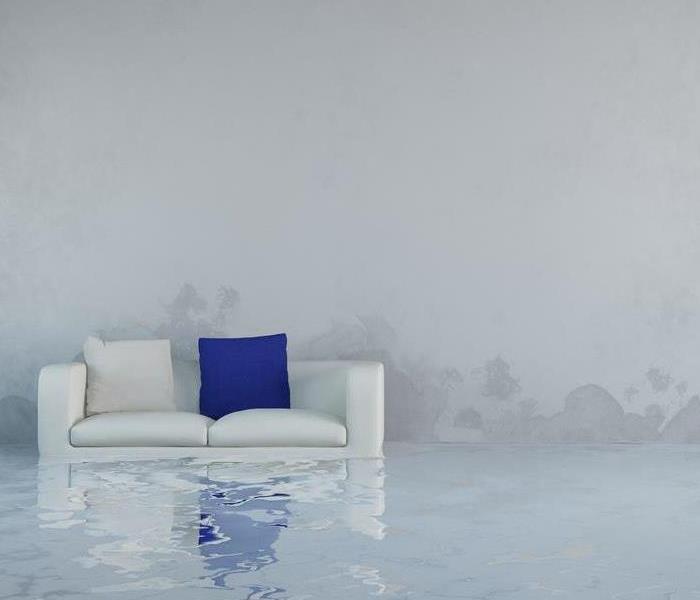Not All Water Damage Is Created Equal
4/28/2018 (Permalink)
How many of you remember as a kid playing in or around storm water drains or roadside ditches? It was fun, right? While you may have enjoyed splashing around in the waters, you might not realize that storm water like this may actually be contaminated with raw sewage, dangerous chemicals, or harmful bacteria and viruses capable of transmitting dangerous diseases to you.
In this same way, the harmful water that invades your home following a broken pipe, clogged toilet overflow, leaking dishwasher, overflowing washing machines, leaky roofs, or even foundation crack can be harmful.
Restoration Depends on Water Type
Specific steps must be taken to reduce property destruction, depending on the type of water damage. According to the Institution of Inspection Cleaning and Restoration Certification (IICRC), who sets the standards for the cleaning industry and water damage restoration training, there are three levels or types of water involved in damages. They include:
Category 1: Clean water
This water damage is from sanitary sources, such as an overflowing sink or tub, burst water pipes, failed supply lines to appliances, drinking fountains, or vertical falling rainwater.
Category 2: Grey water
This water is from sources that could make you uncomfortable or ill if ingested. Washing machine, dishwasher, or urine-tainted toilet overflows belong in this category.
Category 3: Black water
This is the worst classification of water and could cause severe illness if ingested. Sewer backups, flooded rivers, feces-tainted toilet overflows, or stagnant liquid that has bacterial growth are all examples of black water.
Let the Experts Save Your Home and Belongings
Seeping water damage is progressive, pervasive and can mean valuable objects or keepsakes may become permanently damaged. The professionals you find at a local SERVPRO are trained on how to handle the various types of water damage. Once they arrive on the scene at a home or business, they quickly assess the situation and start the restoration process in these three areas:
- Aggressive cleaning: Wall cavities and other surfaces are pressure washed with a detergent solution. Salvageable materials are flushed and thoroughly disinfected.
- Moisture detection: Not all water damage is visible to the naked eye. Water trapped in structural cavities may require sophisticated detection equipment to mitigate odors, prevent mold growth and minimize structural damage.
- Rapid Structural Drying: Mold begins growing on soggy surfaces within only 24 to 48 hours. Rapid drying, all the way down to the building’s substructure, is necessary to restore pre-flood conditions.
After your home floods, you may think your home and its contents are beyond hope, but many of your furnishings and belongings can be restored. With SERVPRO Of Mt.Pleasant, Clare and Houghton Lake's help, your flooded home can be cleaned up, dried out, rebuilt, and reoccupied sooner than you think.
If you find yourself dealing with water damage contact SERVPRO of Mt.Pleasant, Clare and Houghton Lake @ 989-775-5065 24/7 one of representatives are standing by.




 24/7 Emergency Service
24/7 Emergency Service
